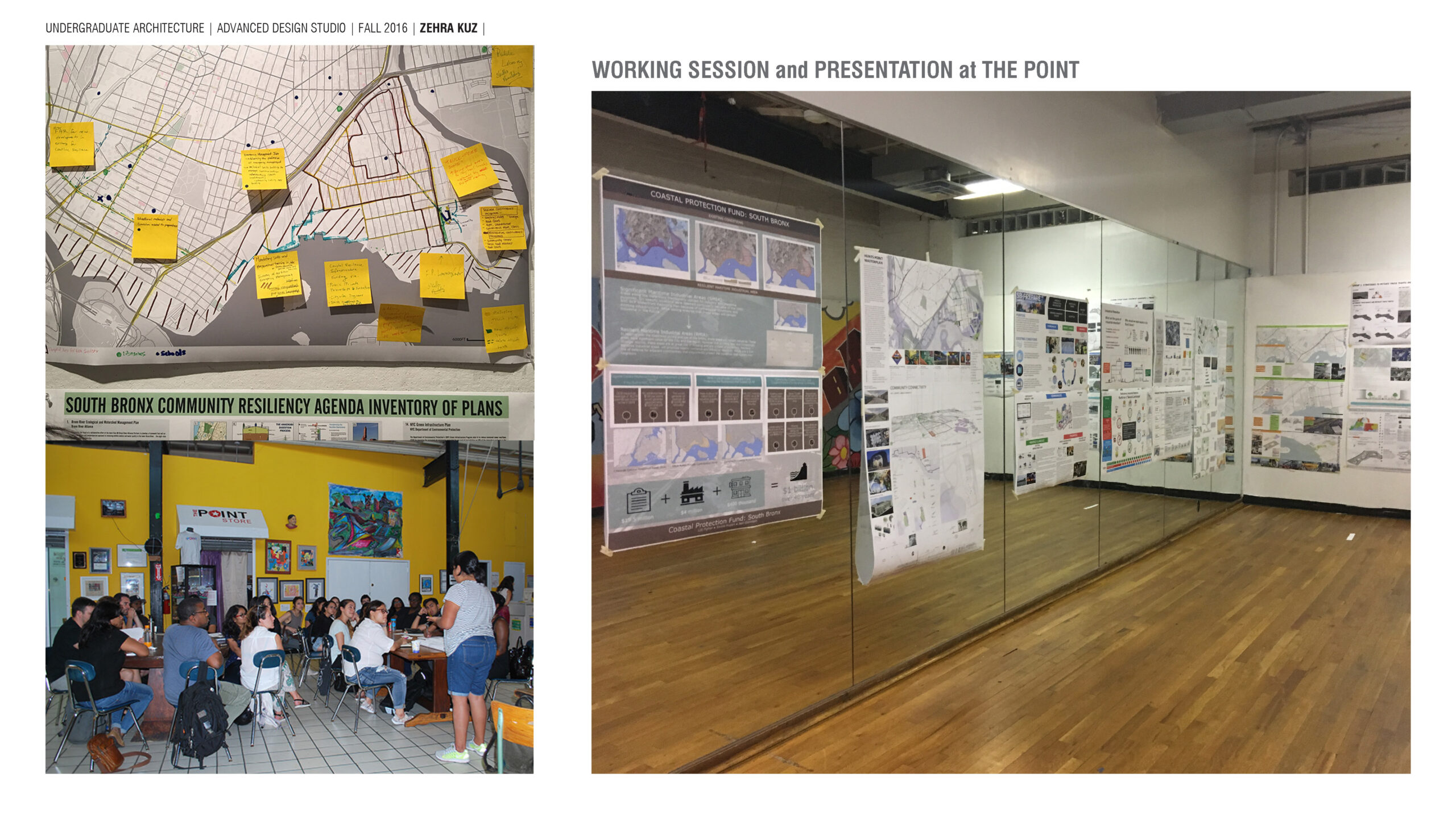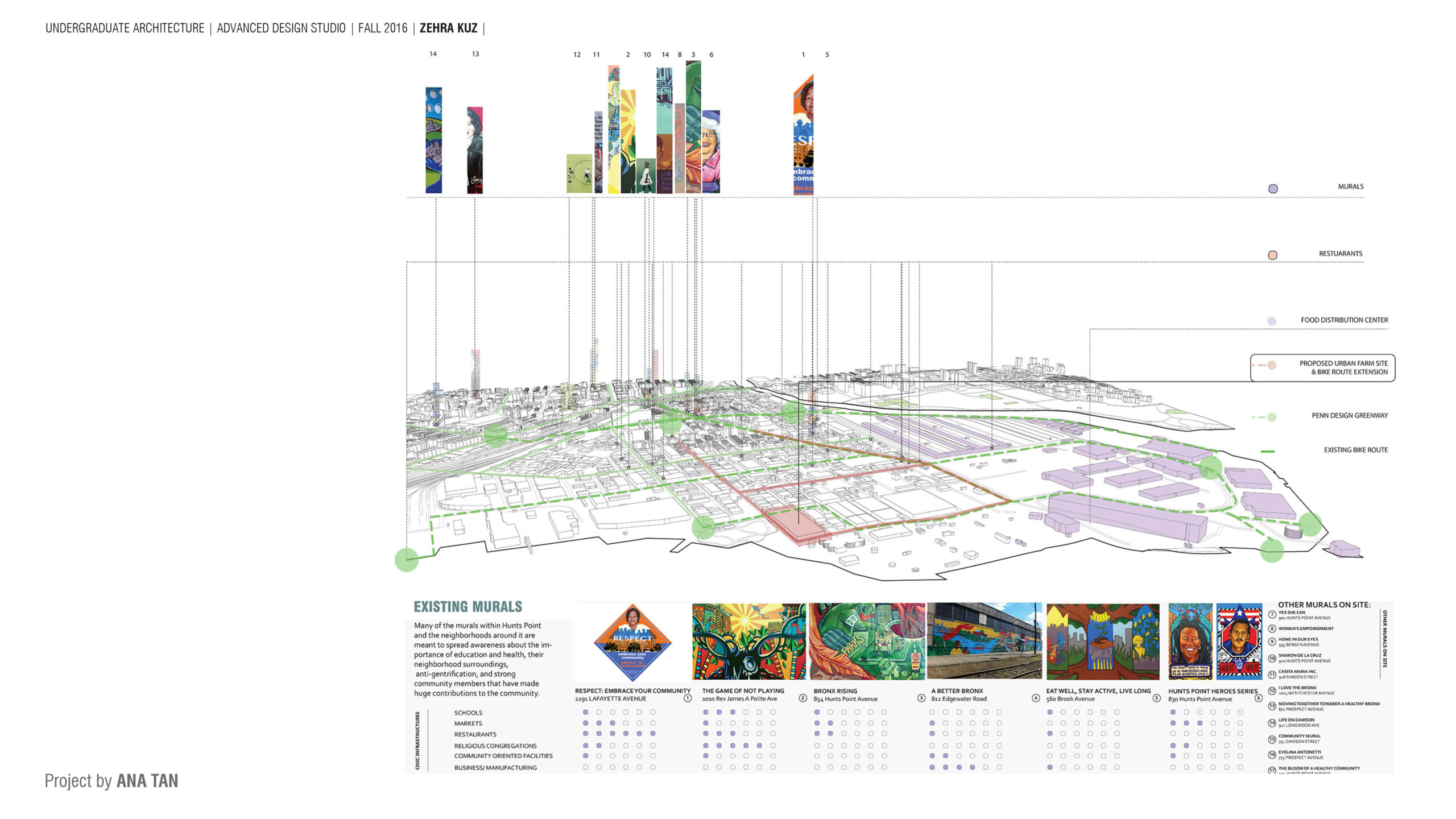On-the-Working-Waterfront
Fall 2016
Arch 400, Delta Cities Studio
U.G Architecture [in collaboration with GCPE (PSPD)]
Full project report can be accessed here
Pathways to a Resilient south Bronx
Inspired by the RAMP initiative (2013-2014) and the interdisciplinary approach to address the changing climate’s impact on the City’s vulnerable waterfront gave way to the Delta Cities Coastal Resilience curriculum. This time, the focus shifted from exclusively Superstorm Sandy affected areas to the City’s Working Waterfront for example Hunts Point in the South of Bronx. During Superstorm Sandy, the entire Metro New York area/region dodged a bullet; by the time the storm made its way to the Hunts Point, the high tides were receding and the hub of the distribution network, which supplies food for 22 million people, rode it with minor impact. Here, flooding of the Water Pollution Control Center and the wholesale food (meat and fish) distributors that are located on the low-lying shoreline, would have resulted in an environmental hazard of monumental scale.
Titled On the Working Waterfront in Hunts Point, South Bronx, the Undergraduate Architecture Advanced Design studio, worked in tandem with the Graduate Center for Planning and the Environment (formerly PSPD) team. Together with NYC EJA, The POINT represented a coalition/consortium of local community organizations with the goal to advance South Bronx Resilience Agenda (SBCRA). The list included: Community Board 2, Sustainable South Bronx, Youth Ministries for Peace and Justice, Mothers on the Move, Hunts Point Alliance for Children, Rocking the Boat, Hyde Leadership, Hometown Security Labs, Urban Health Plan, The BLK ProjeK, Food bank for New York City and South Bronx Community Resilience Alliance.
‘On the Working Waterfront’ design studio assessed forms of coastal protection, developed strategies for community preparedness and further envisioned opportunities for industrial retention in the area. They have developed innovative programs and appropriated siting for their proposals.
For example, Matea saw an opportunity to focus on the waste management in the area. Keeping the solid waste from the food (produce, fish, meat, etc.) distribution centers in place would drastically reduce truck traffic and processing the waste through anaerobic digesters would yield power for local use. This eco-park would complement The Point’s emphasis on arts with science-based education, train all ages for new local jobs.
Riya and Sam discovered the redundancy of the train tracks and proposed reviving the multi-modal transportation systems as an alternative to the truck traffic. Their project focuses on activating the waterfront with ferry for commuters as well as for goods.
Ana engages the local community through the neighborhood’s existing culture and creates a narrative alike a path connecting the murals while Mrinalini and Thomas propose a multi-purpose center for truck-drivers (20,000 a day) which include recreational and health care facilities, eateries and shops as well as resting amenities elevated over the truck parking lot.
Client Partner:
- The Point CDC
Professor: Kuz, Zehra
Students:
Chen, Yuan
Downer, Kristopher
Fornasari, Thomas
Gwalani, Samarth
Kulusic, Matea
Moser Marisa
Patel, Riya
Sanghani, Mrinalini
Tan, Ana Jilllian
Wong, Cynthia








